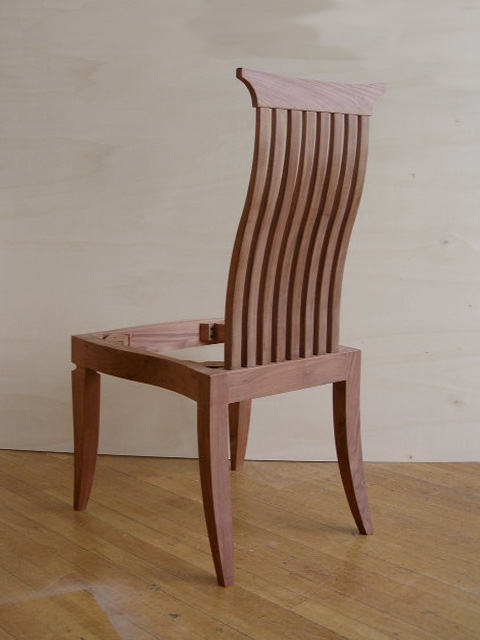Structural Testing for Chairs
There's the Fat Man test, the Little Boy test, the Throw it Off the Roof test, and the "Entire state is sliding into the ocean" test ... you get the idea. January 3, 2012
Question
I am designing and building yet another chair for the high end market. Is there any organization that tests the integrity of such items? This chair is intended for residential use. It will be marketed in a few designer magazines such as "Elle" and "Dwell" (that wasn't intentional by the way).
Forum Responses
(Furniture Making Forum)
From contributor P:
Find a heavy person and have this person sit in it and try to move a foot or more in several directions, by dragging frontwards, and sideways, and backwards. Repeat, say 10 or 15 times. That should do it.
Plan B: compare your design and joinery methods to chairs that you know have survived years of service - look in a thrift shop or library. Light construction can be risky. If you posted a picture of the chair then we could comment on likely weak points of the design.
From the original questioner:
Iím using 6mm floating tenons in backsplat about 2" long. Also 1" into both pieces.
From contributor J:
Chairs don't often fail catastrophically at the back splat. An inch of tenon in each side will make it difficult to come out. You should be ok, provided the leg to rail joints are strong. Don't underestimate corner blocks either.
From the original questioner:
It's the backsplats that are the question. The leg to seat rails are beefy enough with corner blocks rub glued and screwed.
From contributor P:
We've made a chair with back splats tenoned into the rails for many years. I wouldn't do it as a floating tenon, rather mill it out of the end of the splat. Re-infoce the rail it's going into. A picture of our chair is below.

Click here for higher quality, full size image
From contributor P:
I think you should be loading your chair as a user does and looking at the sequence of failure. What you want to avoid is a sudden catastrophic collapse that leaves the user on the floor with no warning. That's why the chairs I design have two sets of structural elements: the piece-to-piece joints and the corner blocks. The joints are going to fail first, and then the corner blocks are going to hold the chair together long enough that it will be obvious to the user that something is wrong before they fall to the floor. If you want to avoid lawsuits, don't injure your clients. If they have plenty of warning that something has broken and they can still use the chair, then any further problems are on them.
